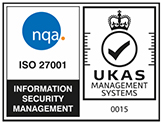It is quite common for land or property to be subject to covenants which restrict certain use or activity on the land. As can be seen from the first part of this article, a covenant must satisfy certain conditions in order to be enforceable. So, if it is enforceable, is there anything you can do to avoid it?
Can you avoid an enforceable covenant?
The most obvious solution is to consider requesting a release from the party with the benefit. In most cases, if they are prepared to offer a release, they may wish to seek a payment or alternative covenant in return. It’s important to note that this approach should only be taken after seeking advice as contacting those with the benefit can sometimes prevent you from pursuing other options afterwards.
If the covenant is very old and the party who may have the benefit of the covenant is not easily identifiable, it may be possible to purchase an indemnity insurance policy to guard – to some extent - against the risk of someone trying to enforce the covenant in the future.
Another option is to apply to the Upper Tribunal (Lands Chamber) for an order that the covenant to be removed or modified under section 84 Law of Property Act 1925. This article considers when such an application can be made and when a request might be granted.
When can Upper Tribunal (Lands Chamber) applications be successful?
In order for an application to succeed, the Tribunal must agree that one of the following conditions is satisfied:
1. The covenant is obsolete
This can be due to changes in the nature of the land or neighbourhood, or some other material change rendering the covenant of no practical importance to anyone.
2. The covenant impedes some reasonable user of the land
What is considered reasonable will vary from one piece of land to another. The Tribunal can look at local development plans and granted planning consents to guide them in relation to reasonable use of the land in question.
3. Those with the benefit do not object to modification or removal
This will of course need to be agreed and confirmed by those with the benefit. Those who benefit may attach conditions to their agreement, such as the payment of money and the detail of such conditions will need to be clear.
4. The proposed discharge or modification will not injure the beneficiaries to the covenant
It’s worth noting that there may be some overlap between this ground and the others.
Next steps?
There are a wealth of points to consider within each condition and an application should not be made until the details of your particular position and covenant has been fully considered with the evidence carefully collaborated.
Likewise, if you are seeking to avoid a covenant which prevents conversion of a house into two or more smaller dwellings, you may wish to consider applying to the county court under section 610 Housing Act 1985 instead, which specifically applies to such situations. This section has its own set of considerations and may, for some, be a more advantageous route. Seeking advice early on, you can consider the most appropriate type of application to make in your situation with knowledgeable experts.
Either way, seeking specialist advice early on is recommended.
If your property is subject to a covenant and you would like advice, please contact Louise James or Claire Bunton in our experienced Property Litigation team. Email us at contact@duttongregory.co.uk or by calling 02380 221344.






